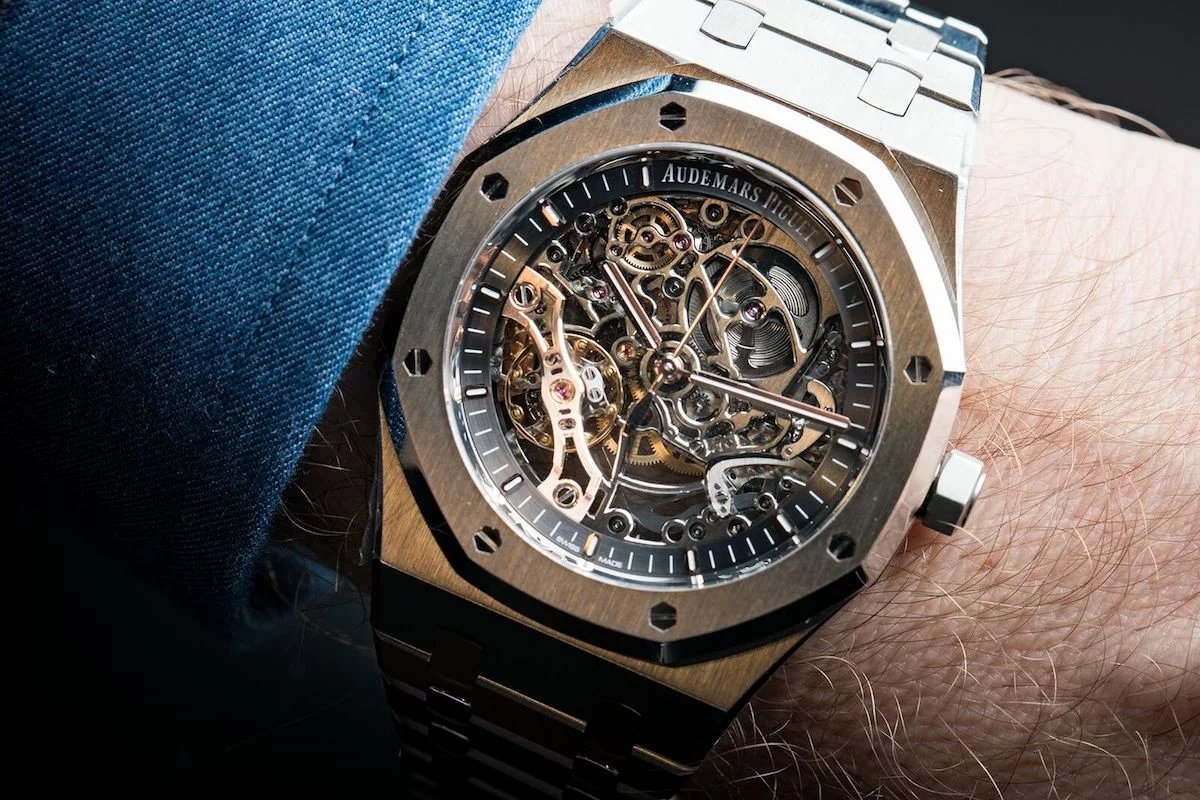The great return of transparency
On a wrist, a skeleton watch doesn’t just tell the time. It reveals a miniature theater: suspended cogs, moving anchor, breathing spring. Long perceived as a niche virtuosity, the skeleton watch is making a comeback. In a world saturated with smooth screens, this mechanical transparency embodies a simple and terribly contemporary idea: hide nothing.
The phenomenon goes beyond the trend. It combines watchmaking culture, desire for authenticity and appetite for objects with strong design. The skeleton has once again become a manifesto, a sign of initiation for those who love the beauty of movement as much as the elegance of gesture.
From a workshop feat to a sign of style
From 18th century salons to today’s shop windows
Originally, the skeleton was born in pocket watchmaking. The masters hollowed out plates and bridges to showcase the hand of the craftsman: mirror beveling, flowery engravings, discreet beading. In the 20th century, a few brands revived the wristwatch exercise, often in confidential series. Today, openworking has freed itself from the ornamental to become an aesthetic language: openwork architecture, play on volumes, levitating indexes, bridges like ribs.
The view of an era in search of authenticity
If the skeleton seduces, it is because she speaks the language of the present time. Transparency of processes, “open kitchen” in gastronomy, raw materials in design: watchmaking follows the movement. Seeing the movement live is a reminder that a mechanical watch is not a black box but an organism. On Instagram or on the wrists of athletes and musicians, these open dials are instantly readable and tell something personal: an intimate relationship with mechanics.
The skeleton, a design that captures the light
Architecture, void and relief
The openwork transforms the watch into a structure. Emptiness draws as much as fullness. The bridges stretch into arches, the wheels become rosettes, the timer floats like a footbridge. The light passes through, catches a polished bevel, slides over a Côte de Genève, stops on a kitten. The result: a unique visual presence, more sculptural than a solid dial.
Controlled readability
The classic criticism? “It’s beautiful, but illegible.” Designers’ response: contrasting minute rings, skeletonized but rhodium-plated or lacquered hands, colored highlights, smoked sapphire crystals which soften the background. The best plays strike a balance between mechanical spectacle and instinctive reading.
The technique at the service of openwork
Design the movement from the sketch
We no longer “dig” at random. Many recent movements are designed from the outset to be skeletonized. This changes everything: plate redesigned for rigidity, firm bridges at stress points, gear train aligned to maintain inertia, optimized power reserve. CAD and simulation make it possible to remove material while maintaining stability and impact resistance.
High-end materials and finishes
Titanium for lightness and dry sound, treated steels for hardness, carbon or ceramic on the case side for protection, sapphire for visual purity. Inside, finishes reign supreme: hand beveling which captures the slightest ray, satin finishing, drawn lines, microblasting on the “shadow” areas. The trained eye will read the quality of a skeleton by the cleanliness of the edges, the absence of burrs, and the consistency of the design of the bridges.
A transversal trend in watchmaking
From independents to large houses, openwork as a standard
The independents pushed the dramaturgy of the skeleton, sometimes to the point of horological surrealism. The major manufacturers followed, each with its own grammar: taut geometry, ultra-flat minimalism, sporty expression. Result: today there are skeletons for every wrist, from everyday chic to extreme engineering manifesto.
- Openwork sport-chic: angular bridges, integrated bracelets, graphic volumes.
- Bright classic: fine round structures, alternating polished and satin surfaces.
- Ultra-thin: airy movements where every micron counts, a pure watchmaking feat.
- Avant-garde: composite materials, bold colors, futuristic architecture.
- Initiatory access: more affordable models which reveal the essentials of the movement without sacrificing readability.
Success can also be explained by a cultural factor: seeing your movement beat creates attachment. A skeleton can be photographed well, shared, commented on. It nourishes a community where we speak English as much as style.
Why are they coming back now?
- Transparency as a cultural value: the object says what it is, without a dial to hide.
- Differentiating aesthetics: in a plethora of offerings, openwork marks a strong identity.
- Mature techniques: simulation, new alloys and know-how allow reliable skeletons, even in sports use.
- Visual culture: social networks and macro-photography magnify micro-mechanics.
- Generation of passion: curiosity for watchmaking, taste for visible “movement”, desire for a story more than a logo.
Choosing the right skeleton watch
Five simple benchmarks
- Readability: contrasting hands, clear indexes, legible flange. If you have to look for the minutes, skip your turn.
- Real finishes: clean bevels, polished corners, no burrs. The openwork should magnify the hand, not betray compromises.
- Coherent architecture: the design of the bridges tells of an intention. Avoid “random” openwork which weakens the structure.
- Comfort and rigidity: well-proportioned case, movement designed for the skeleton, announced shock resistance.
- Personal style: classic, sport-chic or avant-garde? The skeleton is expressive: choose it as a design piece.
An art of watchmaking that hides nothing
The skeleton watch is not just a fashion statement. She embodies a desire for technical beauty and formal sincerity. By lifting the veil on the movement, watchmaking begins to speak again of what it is based on: the passing of time, visible, palpable, almost audible. If it comes back today, it’s because it reminds us why we love watches: for this ballet of metal and light which, every second, reconnects us to the essential.
